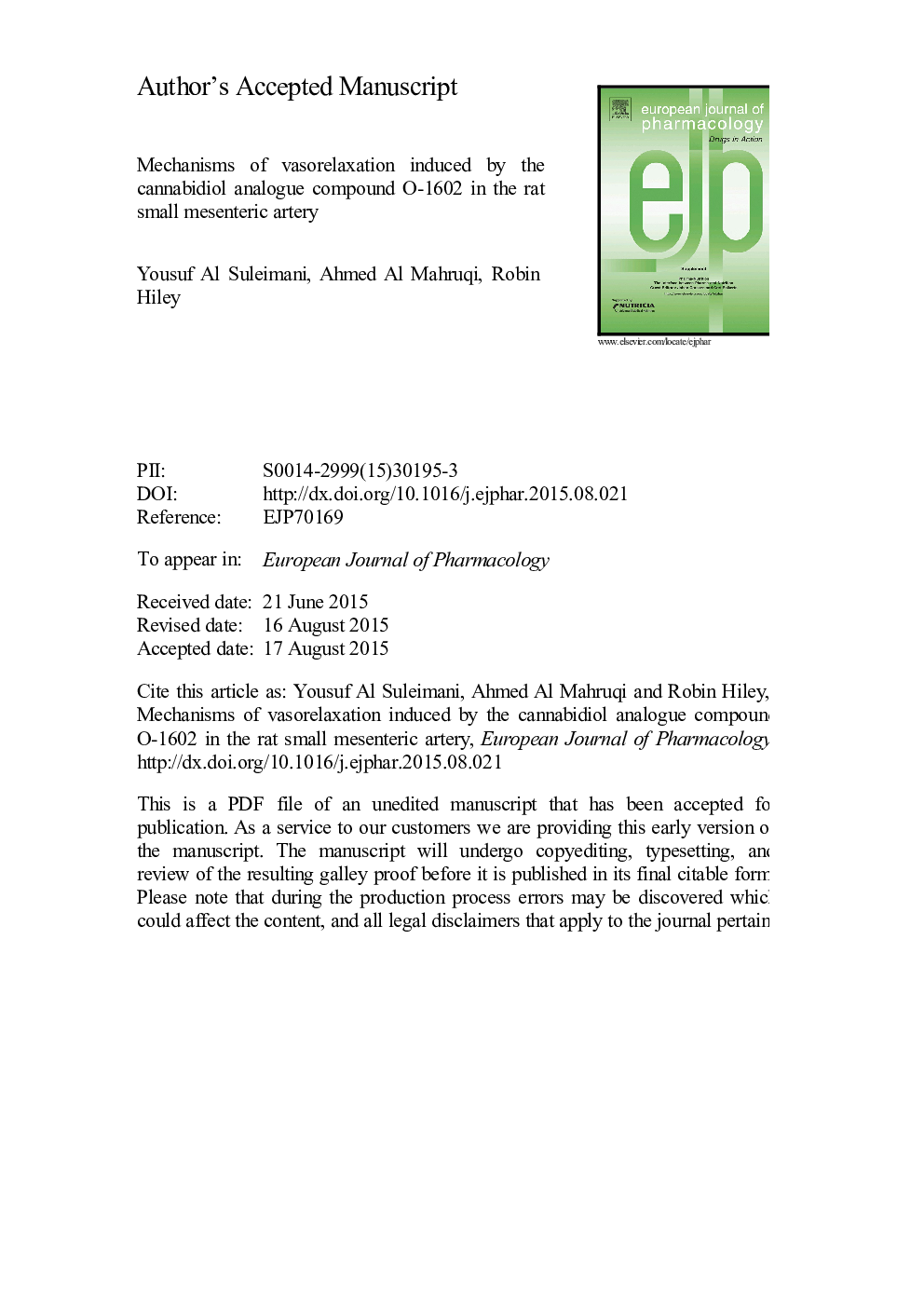| Article ID | Journal | Published Year | Pages | File Type |
|---|---|---|---|---|
| 5826924 | European Journal of Pharmacology | 2015 | 45 Pages |
Abstract
Atypical cannabinoid O-1602 (5-Methyl-4-[(1R,6R)-3-methyl-6-(1-cyclohexen-1-yl]-1,3-benzenediol) induces vasorelaxation and activates the orphan G protein-coupled receptor GPR55 in human endothelial cells. This study investigates the underlying mechanisms of vasorelaxation induced by this compound. The vasodilator activity was assessed in the rat third order branch of the superior mesenteric artery using a wire myograph. The vasorelaxation was partially endothelium-dependent (pEC50%=5.8±0.3). The endothelial component was antagonized by the putative endothelial receptor antagonists rimonabant (3 µM; pEC50%=5.1±0.2) and O-1918 (10 µM; pEC50%=5.3±0.2) but not by the CB1 and CB2 receptors antagonists AM 251 (10 µM) and AM 630 (10 µM), respectively. The vasorelaxation was not pertussis toxin-sensitive and not mediated through TRPVI receptors or by the release of NO, but was reduced by inhibition of Ca2+ sensitive K+ channels (KCa). In endothelium-denuded vessels, O-1602 abolished CaCl2-induced contraction and the inhibition was apparently reversed by O-1918. O-1602 mediates its vasorelaxant effects partly by an endothelium-dependent pathway involving rimonabant- and O-1918-sensitive targets that are distinct from the classical CB1 and CB2 cannabinoid receptors and might involve activation of KCa. The endothelium-independent relaxation might involve interfering with Ca2+ entry.
Keywords
TRPV1L-nitroarginine methyl ester∆9-THCSKCaAbnormal cannabidiolO-1602KCaVGCCGPCREGTACGRPBKCaDMSOIKCal-NAME∆9-tetrahydrocannabinolEndotheliumdimethyl sulphoxideVasorelaxationtransient receptor potential vanilloid-1calcitonin gene-related peptidevoltage-gated Ca2+ channelsVoltage-gated potassium channelcannabinoid receptorG protein-coupled receptor
Related Topics
Life Sciences
Neuroscience
Cellular and Molecular Neuroscience
Authors
Y.M. Al Suleimani, A.S. Al Mahruqi, C.R. Hiley,
